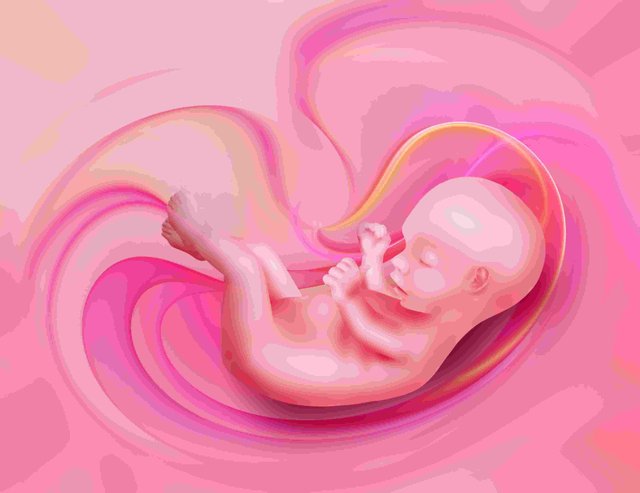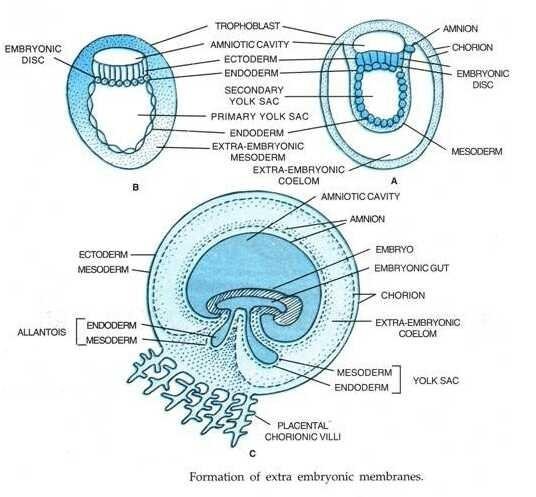Let's Learn About 4 Types of Extra Embryonic Membranes
What Are Extraembryonic Membranes?

Extraembryonic membranes are membranous structures that appear parallel to the embryo and which play important roles in embryonic development. They form from the embryo but do not become part of the individual organism after its birth.
When you're making eggs for breakfast, you're probably not thinking about how an egg is one of the largest cells on Earth. That's right, the chicken egg is a single cell, just like the tiny cells in our bodies! The chicken egg you made for breakfast wasn't fertilized, though. If the chicken had mated with a rooster before laying the egg, an embryo would have grown inside the egg.

The layers inside the egg around the embryo are called extraembryonic membranes, and they nourish and protect the embryo. The yolk that we eat is actually a food source for the embryo growing inside the egg, which is why it's so rich in calories. Read more article.
Extra Embryonic Membranes
1. Yolk sac
It is formed of splanchnopleur (inner endoderm and outer mesoderm) and is well developed in reptiles, birds and prototherians having poly lecithal egg. It is mainly digestive in function so acts as extra embryonic gut. It also absorbs the dissolved yolk and passes it to developing embryo. In human beings, it is vestigial.
2. Amnion
It is innermost fold of somatopleur (inner ectoderm and outer mesoderm) above the embryo. Between the amnion and embryo, there is amniotic cavity filled with amniotic fluid secreted by both embryo and amnion. Amnion protects the embryo while amniotic fluid acts as shock absorber and also prevents dessication of embryo.
4. Allantois
It is a fold of splanchnopleur developed from the hind gut of the embryo. It is well developed in amniotes with polylecithal egg (e.g., reptiles, birds and prototherians) and stores the nitrogenous wastes of the embryo so acts as extra embryonic kidney. In most of eutherian, it combines with chorion to form allantochorion which takes part in placenta formation (Allantoic placenta). It is reduced in human beings.
4. Chorion
It is outermost fold of somatopleur and surrounds the embryo. In reptiles, birds and prototherians, allantochorion acts as extra embryonic lung and helps in exchange of gases. But in primates including human beings, only chorion forms the placenta (chorionic placenta) while in other eutherian, allantochorion forms allantoic placenta.
Conclusion
With these four membranes, the developing embryo is able to carry on essential metabolism while sealed within the egg. Surrounded by amniotic fluid, the embryo is kept as moist as a fish embryo in a pond. Although (most) mammals do not make a shelled egg, they do also enclose their embryo in an amnion. For this reason, the reptiles, birds, and mammals are collectively referred to as the amniota.
Source :
I do not know much about biology, but I think it was very inportant to know about biological system, in order we care about our life and to make our health being better. Thanks for sharing brother.
ithWith these four membranes, the developing embryo is able to carry on essential metabolism while sealed within the egg these four membranes, the developing embryo is able to carry on essential metabolism while sealed within the egg
This post has received a -16.67 % downvote from @meanpeoplesuck thanks to: @blacklist-a.
Congratulations @galerykoe! You have completed some achievement on Steemit and have been rewarded with new badge(s) :
Click on any badge to view your own Board of Honor on SteemitBoard.
For more information about SteemitBoard, click here
If you no longer want to receive notifications, reply to this comment with the word
STOP